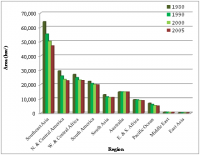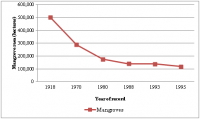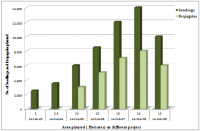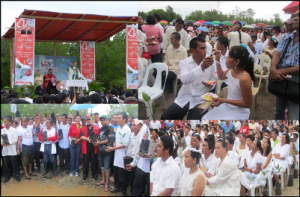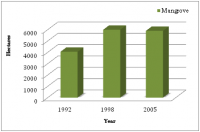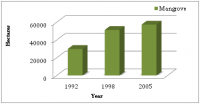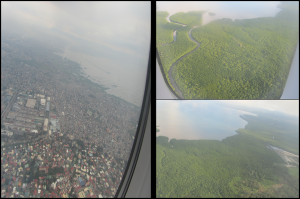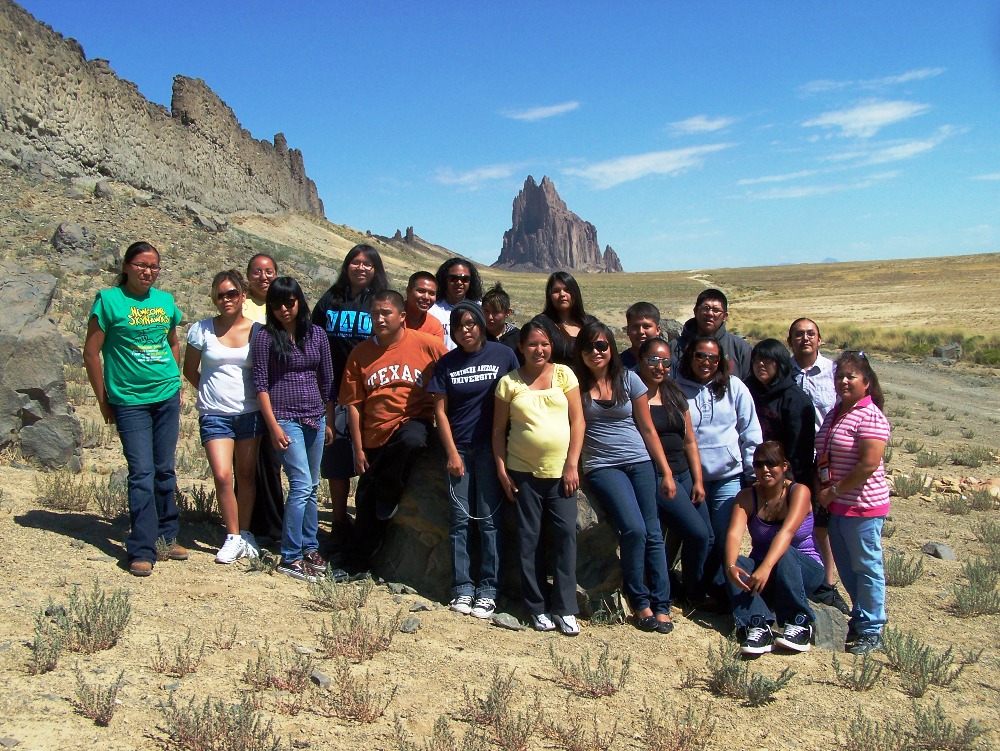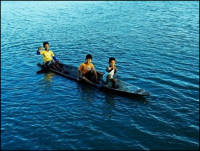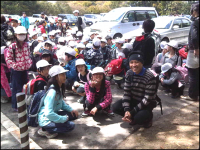In June 2007, two hedge funds linked to Bear Stearns, a major American investment bank, announced losses of US$16 billion, forcing the bank to inject that amount to prevent the collapse of both funds. These funds operated with a high degree of leverage, based on derivatives financed with funds borrowed from large banks, guaranteed with securities backed by mortgages and other debts: the Collateralized Debt Obligations (CDO). The funds together accounted for approximately US$18 billion in bonds (of which US$16.2 billion had been purchased with borrowed funds), which led Bear Stearns Asset Management to play a prominent role in the CDO market.
The losses represented the first signs of the serious financial crisis that would reach its peak the following year, in 2008, when Bear Stearns itself was bought by JP Morgan Chase in a deal for only US$236 million, aimed at avoiding bankruptcy.
Despite its seriousness, this was not the first time that the failure of a hedge fund triggered panic on international financial markets and weakened them. Ten years earlier, in 1998, the collapse of Long-Term Capital Management (LTCM) forced the Fed, along with 14 financial institutions, to orchestrate a recapitalization of US$0.6 billion. Like Bear Stearns, LTCM had borrowed large amounts from the banking sector, allowing it to take bets that exceeded the notional value of US$1.5 trillion, while shareholders capital was no more than US$4.8 billion. This fund was, arguably, the most active user of interest rate swaps in the world, with contracts that totaled US$750 billion. The magnitude of the two events and the similarity of strategies used to obtain high returns—high degree of leverage and loans from banks—have raised questions about the effectiveness of regulatory initiatives to avoid the recurrence of systemic crisis.
Debate on Regulation 
Traditionally, supporters of “laissez faire” argue that hedge funds increase the efficiency and liquidity of the financial system, either by spreading risk among a large number of investors or by improving the pricing of the traded assets, thus removing any space for more restrictive regulations. Not coincidentally, in the last 10 years, mainly in the United States and Europe, the notion that financial regulatory institutions should interfere minimally and only in situations involving the general public has preponderated. Along this line, the hedge funds, as private investment structures targeting high-income investors—and treated in a different way from regular investors—were placed outside the direct jurisdiction of regulators.
Following this line of thinking, regulatory efforts in the period focused on improving the ability of banks and other financial institutions to monitor and manage risks by individually managing exposure to these funds. The promotion of transparency about the risks assumed by those investment companies would be sufficient, it was argued, to enforce an adequate market discipline, with no need for a more direct regulation.
The predominance of this view has hindered the adoption of a more restrictive regulatory framework, especially with regard to the systemic aspects of these funds in financial markets. Even in the context of the last global crisis, the belief that hedge funds played a limited role in the genesis of the systemic turmoil has prevailed, in spite of the substantial losses they have suffered.
In this scenario, hedge funds have fed paradoxes with serious implications for the dynamics of the international financial system. First, they present themselves as managers of large private fortunes, mainly for large institutional investors; however, they usually take loans with the formal banking system, and thus they naturally transfer the risk of their positions to the entire credit system, that is, they transform the operations of private funds into operations throughout the investing public. Second, they claim to be able to deliver high absolute returns, in any condition, exploiting price anomalies in the market; however, they often suffer significant losses in situations of turbulence, as seen in the last global crisis. Third, while they remain largely outside the scope of regulations, they are undoubtedly channels of transmission of systemic risk. Fourth, despite the large number of these agents and the diversity in their investment strategies and objectives, they present a noticeable similarity in their risk exposures and the securities they trade, which tends to cancel any eventually positive effect of a possible heterogeneity of these agents.
The recent, post-crisis initiatives on the regulation of hedge funds, both in United States and Europe, have exhibited superficial and still timid proposals to effectively counter the contradictions listed above. On the other hand, unlike most countries that are still discussing and trying to adopt their laws, in Brazil it has already become a reality. Interestingly, most of the claims for stricter rules on the behavior of hedge funds are particularly familiar to the Brazilian financial markets, and Brazil may be able to make a significant contributions to the design of a more effective regulatory framework at the international level.
The Example of the Brazilian Experience 
Traditionally, the Brazilian capital market has been marked by the presence of restrictive regulatory and supervisory structures. Particularly in the segment of investment funds, while the offshore vehicles enjoy wide freedom in conducting its operations, onshore funds must conform to strict standards of regulation and supervision. These standards, although targets of criticism by those who advocate a more flexible market, recently have received worldwide attention because of the low vulnerability demonstrated by domestic financial institutions during the unfolding of the international financial crisis, initiated in the subprime mortgage market in the United States.
Among the major domestic requirements, all investment funds based in Brazil must be registered with the Comissão de Valores Mobiliários (CVM, or the Securities Commission) that acts as the primary regulator and supervisor of funds and investment firms in the country. In accordance with CVM instructions, all funds, including hedge funds, must provide daily liquidity reports and disclose, also daily, the value of their quotas and assets to the general public. Moreover, managers must monthly deliver to CVM statements with the composition and diversification of the portfolio, as well as a summary trial balance of their funds. Additionally, every year they have to send to CVM a consolidated balance sheet approved by an independent auditor. At the same time, the Associação Brasileira das Entidades dos Mercados Financeiros e de Capitais (ANBIMA, or the Brazilian Association of Financial and Capital Markets Entities), which pools the institutions that manage funds in Brazil, also plays an important self-policing role.
In addition to these requirements that provide more transparency to the public, an important restriction applied to the funds in Brazil is that these entities are prohibited from contracting and receiving loans from financial institutions. This limitation establishes an important difference between domestic and offshore funds, since it reduces the possibility of highly leveraged funds being supported by third parties and eliminates a disturbing channel of exposure of the formal banking system to hedge funds, which proved to be particularly disruptive to the international financial market in the last crisis.
On this point, it is important to note that Brazilian authorities do not officially consider hedge funds to be a different family of investment funds and usually subject them to the same regulatory rules that are applied to other funds. Another specificity of the Brazilian financial sector involves the over-the-counter market, in which all financial derivative instruments and securities traded are recorded with the Central de Custódia e de Liquidação Financeira de Títulos (CETIP, or the Central Securities Depository), an agency supervised by the Central Bank of Brazil and whose activities are regulated by CVM. Thus, all securities exchanged between private investors outside the regulated market (São Paulo Stock Exchange) are subject anyway to observation by national regulatory authorities. Again, in the context of both the international financial crisis and the collapse of LTCM in the United States, the absence of such information was particularly harmful in assessing the real extent of risk exposure between different financial institutions.
All these restrictions have been relatively successful in preventing and avoiding the propagation of systemic risk within the domestic financial market, although they are not fully able to prevent the contagion of crisis in the unregulated global markets. Amid the recent turmoil, the defense of more direct, coordinated, and continuous supervision of financial institutions in different countries has gained importance in international forums, making it increasingly more urgent. In this scenario, the Brazilian experience on the regulation of the investment fund industry can be a relevant reference in guiding these discussions at the international level.
The opinions expressed in this paper are those of the author and do not necessarily reflect the views of any organization with which she is or has been affiliated.








